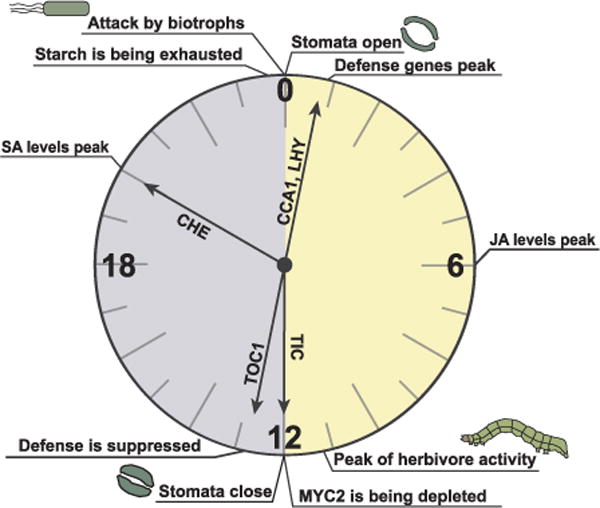Fig. 1.

The many hands of the circadian clock. The circadian clock (genes represented by arrows in the figure) primes several active plant defenses against biotrophs towards the morning and daytime, when stomata are open, the energy is available due to photosynthesis and the conditions are favorable for pathogen invasion. The clock suppresses the active defense against biotrophs at night, relying on closed stomata to prevent pathogen invasion. JA signaling component MYC2 is depleted through the night and accumulates during the day. The nighttime peak of SA and the daytime peak of JA could anticipate the morning attack by biotrophs and peak herbivore activity just before dusk, respectively.
